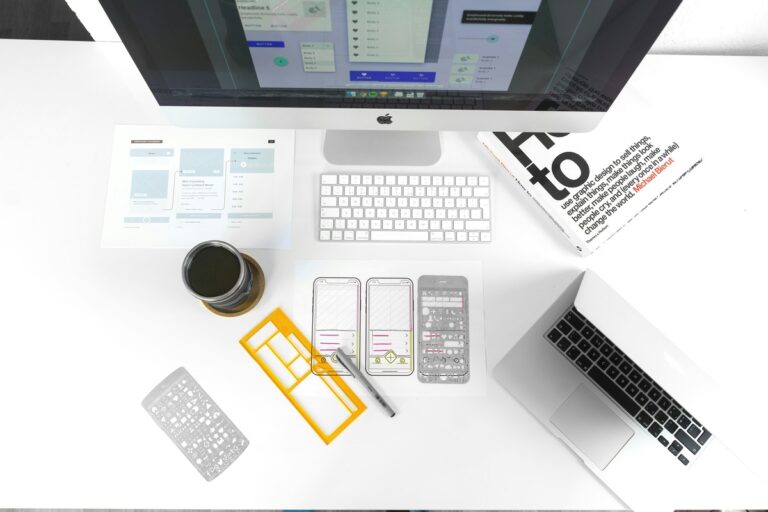Learn the differences between CSS Grid and Flexbox, when to use each, and how to create stunning, responsive layouts for your website. Perfect for beginners and advanced developers!
Introduction
- Hook: “Struggling to create responsive layouts? CSS Grid and Flexbox are here to save the day!”
- Brief Overview: CSS Grid and Flexbox are two powerful layout tools in CSS. While they share some similarities, they serve different purposes and can be used together to build modern, responsive designs.
- Why This Matters: Understanding these tools will help you create cleaner, more efficient layouts without relying on frameworks like Bootstrap.
What is CSS Grid?
- Definition: CSS Grid is a two-dimensional layout system that allows you to create complex grid-based designs.
- Key Features:
- Rows and columns
- Precise control over placement
- Responsive design with
fr,minmax(), andauto-fit
- Use Cases:
- Magazine-style layouts
- Dashboard designs
- Complex, multi-column structures
What is Flexbox?
- Definition: Flexbox is a one-dimensional layout system designed for distributing space along a single axis (row or column).
- Key Features:
- Align items horizontally or vertically
- Flexible sizing with
flex-grow,flex-shrink, andflex-basis - Easy centering of elements
- Use Cases:
- Navigation bars
- Card layouts
- Centering content vertically and horizontally
CSS Grid vs Flexbox: Key Differences
| Feature | CSS Grid | Flexbox |
|---|---|---|
| Dimensionality | 2D (rows and columns) | 1D (row or column) |
| Use Case | Complex layouts | Single-axis layouts |
| Alignment | Built-in alignment properties | Requires more manual alignment |
| Browser Support | Excellent (modern browsers) | Excellent (modern browsers) |
When to Use CSS Grid
- Scenario 1: You need a complex, multi-dimensional layout (e.g., a dashboard or portfolio).
- Scenario 2: You want precise control over rows and columns.
- Example Code:cssCopy.container { display: grid; grid-template-columns: repeat(3, 1fr); gap: 10px; }
When to Use Flexbox
- Scenario 1: You need to align items in a single row or column (e.g., a navbar or card list).
- Scenario 2: You want to distribute space dynamically.
- Example Code:cssCopy.container { display: flex; justify-content: space-between; align-items: center; }
Combining CSS Grid and Flexbox
- Why Combine Them? Use Grid for the overall layout and Flexbox for smaller, internal components.
- Example: A responsive card layout where the grid defines the structure, and Flexbox aligns the content inside each card.
- Code Example:cssCopy.grid-container { display: grid; grid-template-columns: repeat(auto-fit, minmax(250px, 1fr)); gap: 20px; } .card { display: flex; flex-direction: column; justify-content: space-between; }
Tips for Using CSS Grid and Flexbox
- Start Mobile-First: Use Flexbox for simpler layouts on mobile and add Grid for more complex designs on larger screens.
- Use
gapfor Spacing: Both Grid and Flexbox support thegapproperty for consistent spacing. - Leverage Browser DevTools: Inspect and debug your layouts using browser developer tools.
- Experiment with
minmax(): Create flexible, responsive grids with theminmax()function.
Common Mistakes to Avoid
- Overusing Flexbox for Grid Layouts: Flexbox isn’t ideal for complex, two-dimensional designs.
- Ignoring Browser Support: While modern browsers support both, always test your layouts in older browsers.
- Not Using Semantic HTML: Pair your CSS with clean, semantic HTML for better accessibility.
FAQs About CSS Grid and Flexbox
- Can I use CSS Grid and Flexbox together?
- Yes! They complement each other perfectly. Use Grid for the overall layout and Flexbox for internal alignment.
- Which is better: CSS Grid or Flexbox?
- Neither is “better.” They serve different purposes. Use Grid for complex layouts and Flexbox for simpler, one-dimensional designs.
- Is CSS Grid harder to learn than Flexbox?
- Not necessarily. Both have a learning curve, but Grid’s two-dimensional approach can feel more intuitive for complex layouts.
Conclusion
- Summary: CSS Grid and Flexbox are essential tools for modern web design. Grid excels at complex, two-dimensional layouts, while Flexbox is perfect for aligning items along a single axis.
- Call-to-Action (CTA): “Ready to master CSS Grid and Flexbox? Start experimenting with these examples and take your layouts to the next level!”
